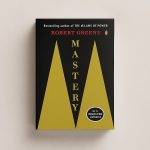Can’t Hurt Me by David Goggins is an unflinching journey into the depths of human potential. From an abusive childhood and crushing self-doubt to elite military service and ultramarathon triumphs, Goggins proves that limits are largely mental illusions. Through raw storytelling and actionable “challenges,” he shows how pain, adversity, and relentless self-discipline forge resilience. This is not about motivation that fades – it’s about rewiring your mind, embracing suffering, and demanding more from yourself than anyone else ever will. Goggins’ blueprint is as harsh as it is transformative, inviting you to break free from comfort and defy the odds.
1. Introduction to Can’t Hurt Me by David Goggins
Can’t Hurt Me by David Goggins (full title Can’t Hurt Me: Master Your Mind and Defy the Odds) is a hybrid of autobiography, motivational manual, and psychological conditioning blueprint. It narrates Goggins’ journey from an abusive childhood, learning disabilities, and obesity to becoming a U.S. Navy SEAL, Army Ranger, Air Force Tactical Air Controller, and an elite ultra-endurance athlete. His story is framed by a set of “Challenges” – practical, often grueling mental and physical exercises aimed at helping the reader develop resilience, mental toughness, and self-mastery.
Goggins’ central message is stark: we are all living far below our true potential – most people operate at only about 40% of their capability. Breaking through this barrier requires deliberately seeking discomfort, embracing suffering as a tool for growth, confronting personal truths, and developing what he calls callousing the mind.
2. Author Biography: David Goggins
– Born: February 17, 1975, Buffalo, New York, USA.
– Early Life: Raised in a violent home under the domination of his father Trunnis Goggins, who owned and operated a roller rink and nightclub. David, his brother, and mother were frequently subjected to physical abuse.
– Childhood Challenges: Lived with poverty, racial prejudice, learning disabilities (undiagnosed ADHD in youth), and severe anxiety related to “toxic stress” conditions at home (a term he later uses to frame his developmental environment).
– Military Service:
– U.S. Air Force Tactical Air Control Party (until medical disqualification from pilot training for sickle cell trait).
– Completed U.S. Navy SEAL training – including three Hell Weeks – despite setbacks.
– Also graduated from U.S. Army Ranger School, earning the “Enlisted Honor Man” award.
– Athletic Career: Competed in over 60 ultra-endurance events; set a Guinness World Record for most pull-ups in 24 hours (4,030 in 2013).
– Public Speaking & Writing: Sought-after motivational figure; Can’t Hurt Me by David Goggins became a best-seller through self-publishing.
– Philosophy: Emphasizes radical accountability, discomfort as a path to greatness, and mental conditioning through adversity.
3. Book Structure
The book alternates between memoir chapters and Challenge assignments for the reader. This dual structure keeps it both narrative-driven and practical.
– Memoir Sections: Detail Goggins’ life chronologically – childhood abuse, struggles in school, obesity, military trials, athletic feats.
– Challenges: Fifteen in total, each distilled from the lessons in preceding chapters. They emphasize journaling, self-accountability, confronting fear, and testing one’s limits through discipline.
4. Part I – Early Life and Formative Struggles
Abuse and Fear
From the Can’t Hurt Me by David Goggins we learn how Goggins grew up in Williamsville, outside Buffalo, in apparent affluence. In reality, his father ran his household by fear. The children worked long hours at “Skateland” roller rink – fitting skates, cleaning, handling concessions – late into the night, often going to school without proper sleep.
His body often bore bruises from beatings; these had to be hidden at recess and PE. The constant anxiety seeded lifelong hypervigilance.
Racism and School Struggles
Transferred later to rural Indiana, Goggins encountered a different but intense form of racism – slurs, social isolation, and a teacher (Ms. D) who sought to have him removed from the school. Learning difficulties compounded the problem. He stuttered, had hair loss from stress, and was diagnosed with ADHD, but refused medication.
Challenge 1: Take Inventory of Your Life.
Make a complete, unvarnished list of every hardship, disadvantage, and excuse you have used. This becomes raw material for transformation.
5. Part II – Breaking the Cycle: Discipline and the Military
Poor Habits and a Turning Point
Post-graduation from high school, Goggins slipped into unhealthy habits: poor diet, smoking, and avoidance of challenge. He weighed nearly 300 pounds. A late-night infomercial about Navy SEAL training sparked a vision for change.
When he approached a recruiter, he learned he would need to shed over 100 pounds in three months to even qualify. This sparked one of his earliest self-designed “callous the mind” programs: ultra-high-intensity workouts, strict nutrition, and visualization.
BUD/S and Setbacks
Goggins entered Basic Underwater Demolition/SEAL training (BUD/S) but suffered injuries that required restarting – ultimately completing three Hell Weeks. He constantly reframed suffering as an ally, telling himself he was becoming harder than his competitors.
Challenge 2: The Accountability Mirror. Place sticky notes on a mirror with brutally honest truths about your current self and tangible actions to correct them. Face them daily.
6. Part III – The 40% Rule and Callousing the Mind
One of the book’s most repeated concepts – explained in both the text and numerous interviews – is the 40% Rule:
“When you feel you’ve reached your limit, you’ve actually tapped only about 40% of your true capacity.”
This idea, grounded in both anecdotal experience and performance psychology research (supporting the brain’s protective “governor” mechanism), reframes fatigue as an illusion.
“Callousing the mind” means intentionally seeking hardship – long runs in bad weather, cold-water immersion, ultramarathons – to desensitize yourself to discomfort and fear.
7. Part IV – Mastery Through Suffering
Ultra-Endurance Challenges
Goggins shifted from military service into ultramarathon and endurance challenges, often unprepared in conventional terms. His first 100-mile race, the San Diego One Day, was attempted without a training base. He endured kidney failure symptoms, broken bones, cramping – yet finished, discovering a new threshold for pain tolerance.
Setbacks as Fuel
Losses, injuries, and public failures were reframed as opportunities to sharpen mental armor. “Taking souls” – a phrase he uses often – means outperforming competitors or overcoming conditions to such a degree that you demoralize obstacles themselves.
Challenge 3: Step Outside Your Comfort Zone Daily. Deliberately select activities you dislike or fear, and do them until they no longer control you.
8. Part V – Radical Accountability and Visualization
The Cookie Jar
Goggins’ mental tool, the “cookie jar,” is a bank of memories from past victories – moments when he overcame adversity. During low points, he “reaches into” this jar to remind himself of proven strength, boosting willpower under strain.
Visualization and Positive Self-Talk
Borrowing from sports psychology, he recommends vividly imagining the process and outcome of difficult tasks, and rehearsing positive self-talk scripts to replace defeatist narratives.
9. Part VI – Facing Trauma and Owning Identity
Throughout the book, Goggins confronts the pain of his past without sugarcoating it. He shares the murder of Wilmoth Irving, his stepfather figure (“Truth Hurts” chapter), and the cycles of emotional collapse that followed.
By reframing his past as a reservoir of strength rather than a source of victimhood, Goggins models a key premise: your trauma can be your training ground.
Challenge 4: Journal Your Trauma. Record events of pain and how they shaped you. Then reinterpret them as preparation for future battles.
10. Key Takeaways and Principles of Can’t Hurt Me by David Goggins
The consistent core ideas are:
- Brutal Honesty: Face your current reality without denial.
- The Accountability Mirror: Daily confrontation with your shortcomings.
- Voluntary Discomfort: Seek hardship to expand tolerance.
- 40% Rule: You have far more in reserve than you believe.
- Cookie Jar of Wins: Build a mental archive of victories.
- Callous the Mind: Repeatedly expose yourself to difficulty until it loses power over you.
- Radical Ownership: No excuses, no outsourcing responsibility.
- Defy the Experts: Limits are often cultural, not physical absolutes.
- Visualization: Train the mind like the body.
- Service to Others: Share your example to inspire action in those around you.
11. Broader Context and Research Alignment
Psychological literature supports several of Goggins’ emphases:
– Stress Inoculation Training (SIT): Mirrors his “callous the mind” concept – incremental exposure to adversity builds resilience.
– Growth Mindset: Like Carol Dweck’s framework, Goggins sees ability as expandable through deliberate effort.
– Post-Traumatic Growth: His narrative exemplifies positive adaptation following severe trauma.
His approach is more extreme than clinical prescriptions, but overlaps with military conditioning and elite sports science, where controlled “overreaching” creates adaptation.
12. Critiques and Limitations
– Applicability: His extreme measures (100-mile races with minimal prep) can inspire but are unsafe for general replication.
– Tone: The language is raw and can alienate more sensitive audiences.
– Evidence: Some stories rely on personal memory and ethos rather than verifiable data.
– Balance: The book heavily weights doing over resting; recovery’s role in sustainable performance is underplayed.
Still, the authenticity of firsthand suffering distinguishes his advice from purely theoretical motivation.
13. Conclusion
Can’t Hurt Me by David Goggins is both a harrowing autobiography and an uncompromising manual for destroying self-imposed limits. Goggins’ life illustrates the principle that extraordinary performance starts with mastering the mind. The book’s alternating format – raw memoir + concrete Challenges – offers readers both inspiration and a do-it-yourself framework.
The most important lesson is not in the feats themselves but in the mindset that made them possible: suffering is the path to self-discovery, and your limits are mostly mental illusions.
By relentlessly confronting hardship, translating trauma into fuel, and holding yourself to radical standards, you can access capacities you never imagined. Goggins’ story is an extreme case study, but its principles scale to any life where comfort has dulled potential.
If you found this summary helpful, please share it or leave a comment below.













